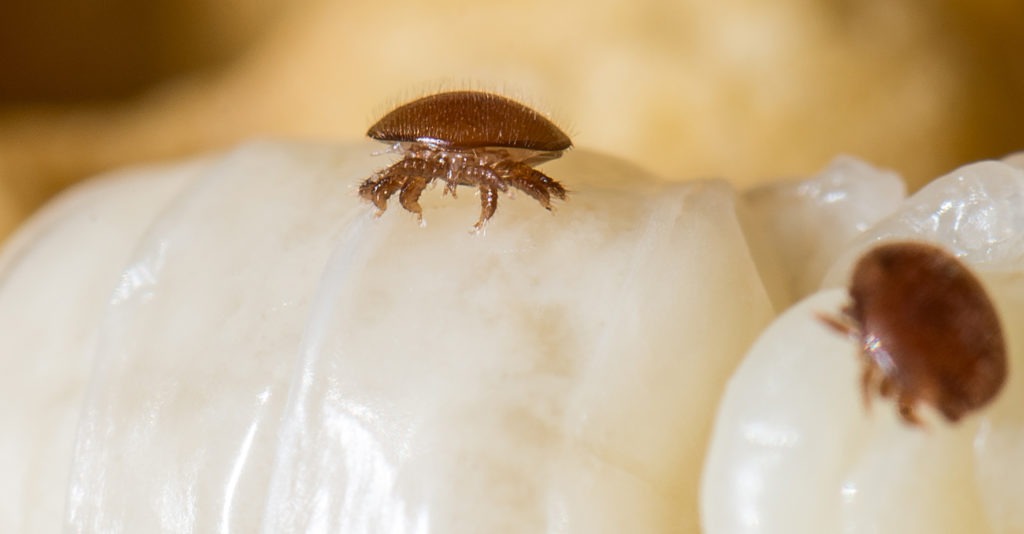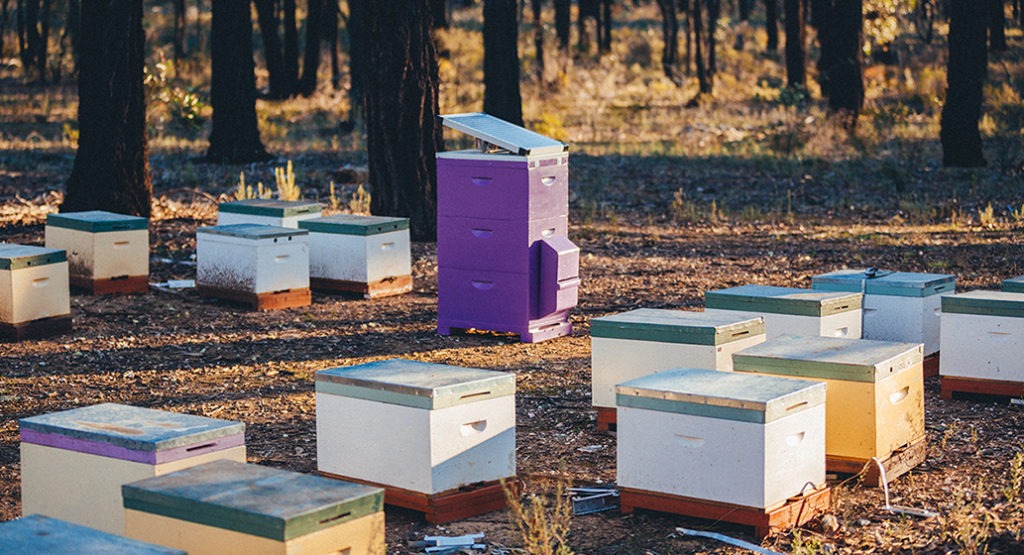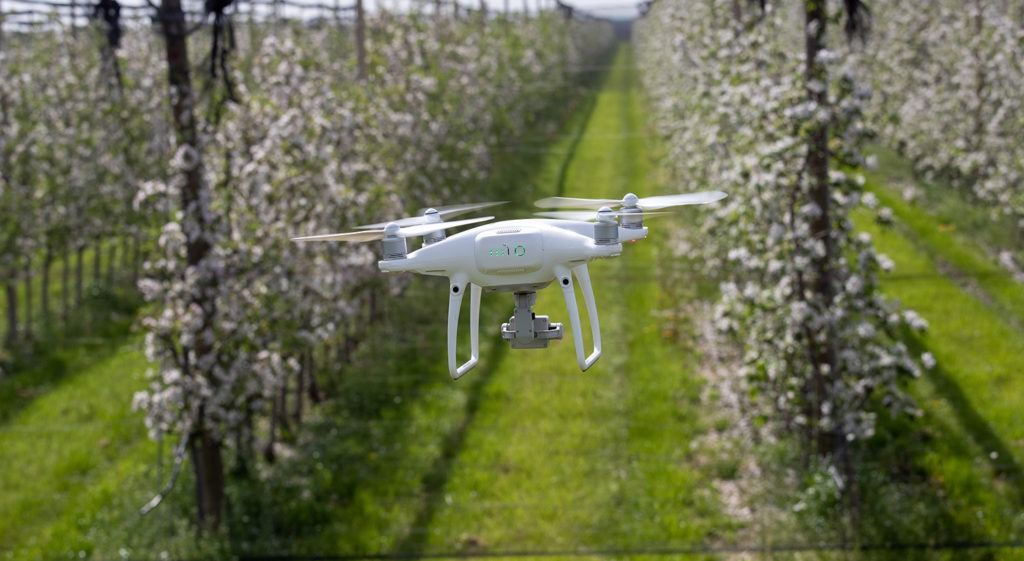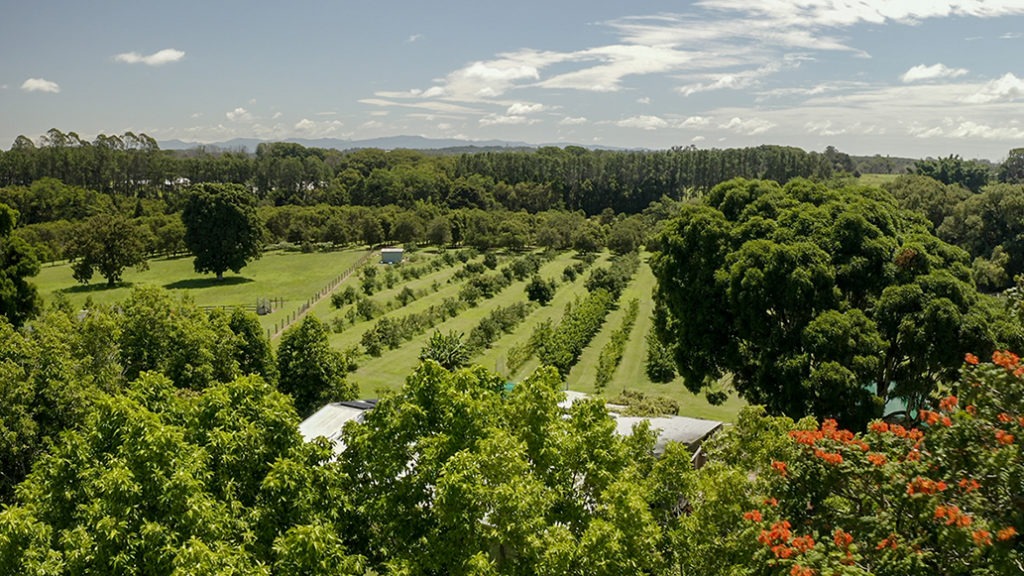New advances in beekeeping
The world is witnessing an alarming decline in bee populations and the diversity of bee species. Why does this matter? Honey bees and native bees are needed to pollinate most of the crops we eat, as well as many crops that feed farmed livestock. In fact, nearly two-thirds of Australia’s agricultural production requires pollination by bees. This means that if we want to ensure our future food security, it’s essential we work to protect our bees. New advances in beekeeping are now being developed, both here and around the world, that are offering fresh hope for our bee populations. These innovations also open up more opportunities for our farmers, beekeepers and honey producers. By giving our bees the helping hand they need, they can continue their important work of feeding the world.

Why are bees disappearing?
Entomologists (insect scientists) are currently studying the reasons behind our global bee crisis. But the cause is pretty clear: bees are dying because of us. Pesticides used in agriculture are toxic to bees. Land clearing to farm crops and build housing for our growing population are destroying bee habitats that contain their food sources. Air pollution is threatening bee health and can interfere with the scent cues bees need to find flowers. Global warming and climate change have led to increased drought and more bushfires and floods, all of which can further reduce bee food sources and destroy hives. In the 10 years between 2006 and 2016, Australia lost an estimated 100,000 commercial beehives.

Getting wise about bees
Israeli start-up Beewise has created BeeHome, the world’s first “smart” beehive. BeeHome is an autonomous, solar-powered beekeeping robot that acts as both medic and guardian to the bees it houses. Using artificial intelligence, machine learning and precision robotics, BeeHome automatically detects any threats to a honey bee colony – such as pesticides or the presence of parasites – and responds by addressing the threat in real time. The climate within the hive is also controlled, so it never becomes too hot or humid for the bees.
BeeHome allows beekeepers to monitor and manage their hives remotely, reducing the amount of manual labour that’s required. The system even detects hive frames that are ready to be harvested and harvests them within the BeeHome. Once a honey container is full, it alerts the beekeeper, who can them come and collect it.
It’s estimated that BeeHome can reduce bee mortality by up to 80 percent, saving bees at scale to secure pollination for a stable food supply. Beewise is now distributing thousands of BeeHomes across California, which produces more than a third of America’s vegetables and two thirds of its fruit and nuts. While the company is currently focused on the North American market, it says Australia and New Zealand are next on its agenda.

The greenhouse effect
Manuka honey is a booming global industry, forecast to be worth $1.27 billion annually by 2027. The honey is famed for its medicinal properties, particularly in wound and burn healing. It’s also believed to boost gut health. Manuka honey is produced from bees that have foraged leptospermum trees, which are native to Australia and New Zealand.
Currently, manuka honey in its purest form is hard to secure. Most manuka honey is collected from the wild or in field and will typically be diluted with other nectars. Now a new trial is underway to produce the world’s first high grade mono-floral Manuka honey.
AgriFutures Australia is working with Western Australian manuka producer ManukaLife to integrate honey bees into greenhouses with leptospermum plants. By containing both the plants and the bees within the greenhouse, it will allow for the production of high-grade, pure manuka honey. Similar enclosed environments have already been proven to increase yield and returns for blueberries, strawberries and blackberries. This trial will be one of the first in the world to use an enclosed environment for nectar collection.
Enabling the production of high strength manuka honey could create new opportunities for our producers that can result in value-added products for the pharmaceutical and medical industries. While this is currently only a trial, once the concept is proven, it can be licensed to third parties who are keen to establish these kinds of plantations.

Enter the destructor
It’s not just humans who are to blame for declining bee populations. Parasites have also been wiping out bee colonies. One of the biggest threats to the honey bee industry is the varroa mite, also known as the varroa destructor. Over the last 50 years, this insidious pest has spread to almost every major beekeeping area in the world, killing hundreds of thousands of honey bee colonies. Australia is currently the only inhabited continent in the world to be free of varroa mite. But if COVID-19 has taught us anything, it’s clear that the arrival of the varroa destructor to Australian shores is not a matter of if, but when.

We’ll be watching
The consequences of a varroa outbreak in Australia would be catastrophic. It’s estimated that if varroa were to show its nasty little face here, 90 to 100 percent of honey bee colonies in Australia could die. But if we catch it early enough, we might be able to stop the varroa mite in its tracks. This is where Bega’s Purple Hive project comes in.
The Purple Hive is a solar-powered artificial intelligence-based device that can be attached to beehives. This device uses a 360-degree camera and machine learning to observe every single bee that enters the hive. It then scans each bee to determine if the varroa mite is present. If a mite is detected, an alert can be sent instantly. This will allow for the affected hive to be quarantined immediately to stop a potentially deadly spread.
The first Purple Hives have been established in the Port of Melbourne. This has been identified as the most likely entry point of bee pests, including the varroa mite. But it’s hoped that one day soon there will be a network of Purple Hives located across Australia.

Underneath the radar
Pollination is important, but it’s not an exact science. You can’t exactly tell bees where to go, or measure how effective their services have been. But husband and wife Kate and David Lyall have developed new technology that’s taking the guesswork out of the picture.
The Lyalls have founded Bee Innovative, an Australian ag tech company that’s working to harness the power of pollination by making it more precise. Bee Innovative has developed BeeDar, a radar-like sensor for bees which is able to identify, track and report bee pollination activity across an orchard or field in near real time. It can show farmers where bees are pollinating, and more importantly, identify areas where bees aren’t effectively pollinating. This information can help farmers to increase their yields.
The company has also developed a real time biosecurity platform to protect our bees from the varroa mite. BeeID uses facial recognition technology with aggregated data to accurately track bees. It acts as a first line of defence for the identification of exotic bees and bee parasites like varroa. This front-line tool allows for rapid identification, quarantine and targeted eradication of the varroa mite, helping to keep Australia varroa-free.

Bee my BFF
Helping our growers to help the bees is another way that we can support our littlest livestock. This is the idea behind the Bee Friendly Farming (BFF) certification program. It works directly with farmers to promote bee-friendly landscapes and practices.
While it only launched in May this year, the program has garnered very strong interest. Applications have been received from apple, grape and avocado growers, as well as graziers and the agroforestry industry. The Almond Board of Australia has recently become a BFF partner, along with Flow Hive and One Tree Planted. A number of almond orchards have also already expressed their interested in becoming BFF certified. This is not surprising, as the Australian almond industry relies on honey bees for pollination to produce nuts. More than 270,000 hives are needed during the pollination season each August.
BFF is also now offering up to $100,000 in grants to support pollinator-friendly tree plantings on BFF certified farms. The grants are available to encourage the planting of trees that are indigenous to the region, provide nectar or pollen that supports bee health and encourage a diversity of pollinators, which ultimately enhances crop pollination outcomes.
To find out more about why bees matter, visit the Wheen Bee Foundation website. You can also help our bees by growing a bee-friendly garden, not using insecticides or herbicides and supporting local beekeepers and honey producers.









